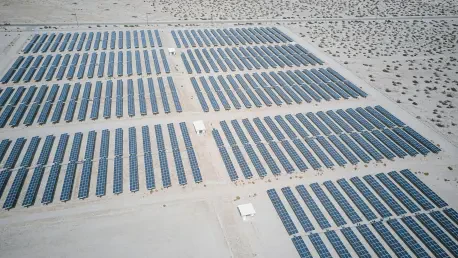The electric vertical takeoff and landing (eVTOL) sector is experiencing a dynamic shift as companies like AIR, an Israeli startup, move forward with technological progress and strategic market positioning. The recent capital infusion of $23 million marks a significant milestone for AIR, facilitating its entry into the competitive U.S. market. Unlike traditional aircraft, eVTOLs represent a transformative approach to personal transportation and logistics, offering innovative solutions for both commercial and defense applications. By exploring the multifaceted strategies and technological advancements of AIR, this narrative delves into how geopolitical dynamics and regulatory frameworks shape the future of airborne mobility within this emerging domain.
Strategic Market Entry and Funding Achievements
The eVTOL industry witnesses a strategic pursuit of market expansion by key players such as AIR, underpinned by capital investments and technological innovations. With a recent $23 million influx from a Series A funding round led by Entrée Capital, AIR has set a clear trajectory for scaling production capabilities and enhancing its workforce. This financial endorsement not only signifies investor confidence but also positions AIR to leverage technological advancements amidst increasing geopolitical complexities. Dr. Shmuel Harlap’s participation, known for his early investment in Mobileye, underscores strategic alignment and foresight within the eVTOL ecosystem. The funding allocation strategy is pivotal, focusing on optimizing production processes in Israel and laying the groundwork for penetrating the U.S. market, where burgeoning regulatory support offers a fertile landscape for aviation innovation.
Immersing itself in the U.S. terrain, AIR focuses on expanding its manufacturing footprint to ensure adherence to defense and enterprise contract stipulations. This strategic move aligns with executive directives favoring domestic eVTOL advancement, providing a competitive edge in an ever-evolving sector. Coupled with evolving FAA regulations under the MOSAIC rule, a tangible framework accelerates the certification pathways for these cutting-edge vehicles. Consequently, AIR seeks to harness this regulatory environment, facilitating its operational enhancement and commercialization opportunities within the U.S. The journey depicted here reflects a harmonious blend of strategic insight and technological preparedness, vital for navigating the landscape of modern aviation.
Diversified Product Portfolio and Technological Synergy
A testament to its innovative engineering prowess, AIR has successfully curated a versatile product lineup within the eVTOL domain, capturing market interest through its dual-purpose aircraft architecture. AIR ONE, the company’s piloted eVTOL model designed for personal transportation, and its unmanned variant meant for logistics and defense roles, showcase AIR’s adeptness in catering to diverse market needs. Both variants share a core design DNA, enabling cross-platform advancements that enhance both development efficiency and manufacturing effectiveness. The resultant synergy manifests in seamless technological integration, setting AIR apart from its competitors such as Joby Aviation and Archer Aviation, which have traditionally showcased strong military partnerships.
The uncrewed model has rapidly gained traction following its debut, marked by over 2,500 preorders for the AIR ONE variant. This robust application portfolio positions AIR advantageously against other industry contenders, all while promising substantial value in both consumer and defense sectors. Such strategic differentiation is invaluable in an intensely competitive market characterized by rapid technological evolution and diversification of product offerings. The symbiotic relationship between the crewed and uncrewed models not only consolidates development objectives but also ensures adaptability in circumstances characterized by varying market demands and geopolitical influences.
Navigating Regulatory Landscapes and Manufacturing Ambitions
As AIR embarks on an ambitious trajectory to amplify its market presence, navigating regulatory landscapes is a key focus area. The U.S. regulatory climate, particularly the FAA’s MOSAIC rule revisions, offers fertile ground for eVTOL technology to thrive, indicating a positive shift towards accommodating advanced air mobility solutions. These updated regulations provide a streamlined pathway to achieving certification for emerging eVTOL technologies, facilitating their commercial deployment and operational integration. For AIR, this presents an opportunity to attain Light Sport Aircraft (LSA) certification by 2026, potentially making it the first certified piloted eVTOL for private use under the new criteria.
In its pursuit of market expansion, AIR is committed to establishing a robust U.S. manufacturing hub, a strategic imperative to effectively engage in enterprise and governmental contract landscapes. Manufacturing domestically enhances eligibility for defense projects, aligning production strategies with federal policies that prioritize local aerospace development. Through the application of automotive-grade manufacturing principles, AIR aims to harmonize high-performance aviation technology with cost-effective production standards, bridging the gap between traditional aviation systems and emerging eVTOL solutions.
Infrastructure Solutions and Future Considerations
The electric vertical takeoff and landing (eVTOL) industry is undergoing a dynamic evolution, with companies like AIR, an Israeli startup, making significant strides in technological advancements and strategic positioning within the marketplace. AIR’s recent $23 million capital injection signifies a major achievement, paving the way for its entry into the fiercely competitive U.S. market. Different from conventional aircraft, eVTOLs present a revolutionary approach to personal transport and logistics, offering innovative solutions for both commercial and defense sectors. This narrative delves into AIR’s multifaceted strategies and technological innovations, highlighting how geopolitical dynamics and regulatory frameworks influence the trajectory of airborne mobility in this emerging field. Understanding these factors is paramount as they set the stage for future developments, reshaping the landscape of personal and commercial transportation, where eVTOLs are positioned to play a pivotal role in redefining air travel and logistics.









